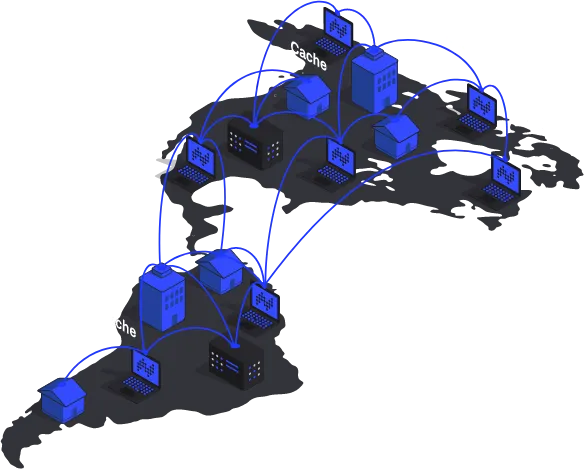
Decentralized platforms are delivering a novel solution: enabling the masses to allocate their resources to collectively fulfil global demands of various services. One extremely valuable resource that has incredible amounts of excess supply yet remains unconnected to global demand is computational resources.
People across the world have excess storage capacity and computing power, and in the digital age, these are high-demand assets. Organizing the already available supply with into precise market solutions is a major economic breakthrough waiting to be delivered.
Solutions Derived from Excess Computational Resources
A number of blockchain projects have set out to build marketplaces where excess computational resources could potentially be sold on a spot market. This is a good solution but it lacks the convenience offered by centralized service providers. Major companies have the capital to simply buy cloud services from companies like Amazon and SMEs lack the capital to hire technical staff with the capacity to sync computational resources leased on a spot market to internal networks.

Large firms can afford to dodge the web's bottlenecks.
There’s work being done to make spot markets for computational resources more desirable platforms, but a startup called NOIA has opted for a completely different use-case for excess storage capacity and computing power.
A Dive into BGPs
The internet involves a monumental flow of data. The content we consume each day is pulled from Content Delivery Networks, abbreviated as CDNs.
While CDNs are the source of the content, the data must flow through certain channels to reach us. The Border Gateway Protocol is the deciding factor behind which path data takes when heading towards a content consumer. BGP is designed to direct the shortest path; while this standard may seem rational with a topical view, the reality is that consistent targeting of the shortest path leads to bottlenecks.
Additionally, BGP breeches are the source of billions of dollars in expenses to enterprises—both large and small. Solutions in the form of Internet Overlay Networks do exist, however, the expensive nature of the solution limits it to deep-pocketed firms, thereby nullifying the presence of a solution for the little guys.

NOIA’s perspective is to resolve the problems associated with BGPs by delivering a low-cost solution in the form of a Software Defined Network (SDN).
Rise of the Software Designed Network (SDN)
An SDN enables traffic delivery to become more agile by enabling data to flow through the most efficient channel rather than the shortest channel; this leads to a reduction in bottlenecks in data flow.
An SDN consists of nodes that direct data flow as designated by a controller. NOIA’s solution is to automate the functionality of SDNs at scale by removing reliance on a centralized controller. To achieve this, NOIA binds two novel technologies: Segment Routing and IPv6.
IPv6 allows network administrators to code instructions, including router paths, into individual data packets. Segment Routing then enables routers the information set forth by IPv6, thereby allowing the selection of unique routing paths. In essence, the combination of these technologies, termed as SRv6, makes the internet programmable as there isn’t a need for a centralized decision on where data must flow. Rather, routers can automatically pull data to the most efficient channel based on the information-packed within individual data packets.

Spreading the Solution to the Public
SRv6 or similar solutions are already available to private networks utilized by large firms. However, this is a solution that can aid the enhancement of public’s usage of the web.

NOIA has already created in-demand solutions.
There is a caveat: for this system to work on the public web, it must be possible to grasp which routers are available and then to utilize a public network of routers. NOIA uses blockchain technology to create a platform embedded with smart contracts that allow network nodes to sell excess computational resources to function as an open web of internet exchange points. This enables anyone to become a point at which web data can flow through, and this service can be openly bought whenever needed.
The SRv6 can determine which routers will be optimal for the flow of content at any given point, purchase the internet access point through smart contract-enabled payments, and then redistribute network load as needed. This decentralizes the exchange of content and content pathways on the web by allowing anyone to play a role in the network. Simultaneously, this solution creates a more efficient internet for the web, one with lower costs can be made accessible to businesses of every size.


Connect with me:
Crypto News Blockchain Airdrops Best ICO List Ripple XRP News Ethereum News Cryptocurrency ICO Bounties Monero News Blockchain Lawyers Recover Lost or Stolen Crypto How to Store ERC-20 Tokens Comparing Best Hardware Wallets

